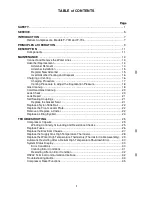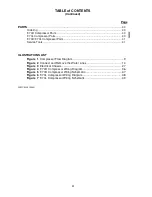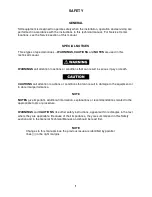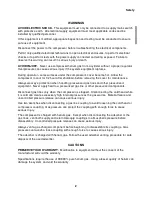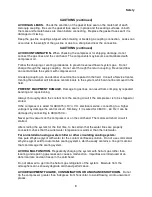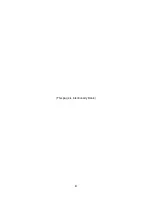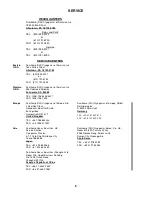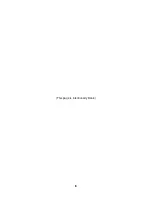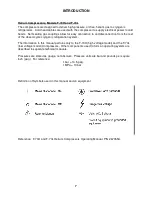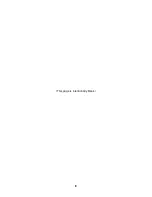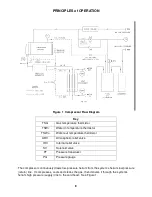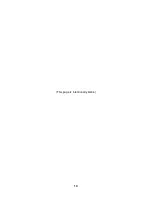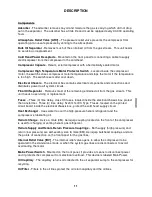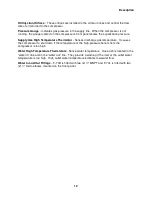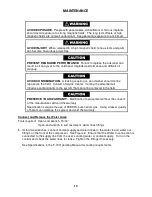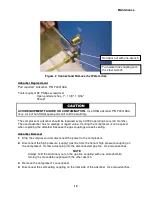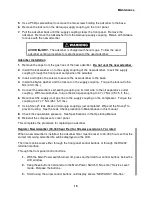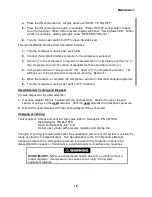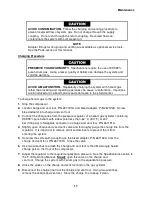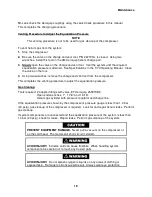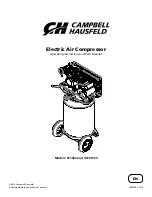
Safety
3
CAUTIONS (continued)
AVOID GAS LEAKS.
Check the condition of the gasket face seal on the male half of each
Aeroquip coupling. Be sure the gasket face seal is in place and the sealing surfaces on both
the male and female halves are clean before connecting. Replace the gasket face seal if it is
damaged or missing.
Keep the gas line couplings aligned when making or breaking a coupling connection. Leaks can
occur due to the weight of the gas line or due to a sharp bend near the connection.
CAUTIONS (continued)
AVOID CONTAMINATION.
When checking the compressor for shipping damage, do not
connect the gas lines and the cold head. The components may become contaminated with
compressor oil.
Follow the charging or venting procedures to prevent reversed flow of system gas. Do not
charge through the supply coupling. Do not vent through the return coupling. Reversed flow
can contaminate the system with compressor oil.
A leaking coupling on an adsorber should not be repaired in the field. Consult a Service Center.
Venting the adsorber will introduce contaminants to the system, which cannot be removed in the
field.
PREVENT EQUIPMENT DAMAGE.
Damage to gas lines can result from crimping by repeated
bending and repositioning.
Always thoroughly drain the coolant from the cooling circuit if the compressor is to be shipped or
stored.
If the compressor is wired for 380/415 (±10%) V3~ electrical service, connecting to a higher
voltage may damage the control circuit. Similarly, if it is wired for 480 V3~, 60 Hz, it can be
damaged by connecting to 380/415 V3~.
Never pull a vacuum on the compressor or on the cold head. The motors will short circuit if
started.
After starting the system for the first time, to be certain that the water lines are properly
connected, check that the outlet water temperature is warmer than the inlet water.
For an installation using a water chiller or other circulating cooling system:
Use pure ethylene glycol with water for the
coolant antifreeze solution. Do not use commercial
ethylene glycol sold for automotive cooling systems, which usually contains a fine grit material
that can damage the cooling system.
AVOID A MALFUNCTION.
Repeatedly charging the system with helium gas rather than
locating and repairing gas leaks can cause a malfunction. Impurities are introduced at an
abnormal rate and can freeze in the cold head.
Do not allow air to get into the helium gas refrigerant of the system. Moisture from the
atmosphere can seriously degrade cold head performance.
AVOID EQUIPMENT FAILURE, CONTAMINATION OR A NUISANCE SHUTDOWN.
Do not
tip the compressor greater than 5 degrees from horizontal, to avoid flowing oil into unwanted
places.
Содержание F-70H
Страница 2: ......
Страница 8: ...4 This page is intentionally blank...
Страница 10: ...6 This page is intentionally blank...
Страница 12: ...8 This page is intentionally blank...
Страница 14: ...10 This page is intentionally blank...
Страница 28: ...24 This page is intentionally blank...
Страница 40: ...Troubleshooting 36 Figure 4 F 70H Compressor Wiring Diagram...
Страница 41: ...Troubleshooting 37 Figure 5 F 70H Compressor Wiring Schematic...
Страница 42: ...Troubleshooting 38 Figure 6 F 70L Compressor Wiring Diagram...
Страница 43: ...Troubleshooting 39 Figure 7 F 70L Compressor Wiring Schematic...
Страница 46: ...42 This page is intentionally blank...



